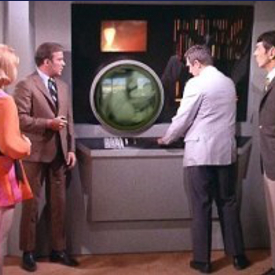Thanks to the mainstreaming of genre it’s no longer disreputable in many parts of academia to declare an interest in and love of genre. While too much interest in genre might once have marked a dead-end career path, genre studies are increasingly simply another option for engaging with art, ideas, and culture. 
It’s a good thing, too. A generation (maybe two) of academics have their roots in childhood love of comics, SF, fantasy, horror, and any number of other subjects that fall outside the traditional cannon. It would be a shame to force them into ever-more-repetitive studies of “great books.”
Thanks to this growing acceptance of genre in the academy, we have Cultographies.
Cultographies is a new series of short monographs on important cult films, written by academics and film scholars. The series is published by Columbia University’s Wallflower Press in association with the University of Wales, Aberystwyth and the University of British Columbia. Cultographies has so far produced eight titles which give a pretty good sense of what series editors Ernest Mathijs (film studies professor at UBC) and Jamie Sexton (film professor at Aberystwyth) are after:
- Bad Taste, by Jim Barratt
- Blade Runner, by Matt Hills
- Bring Me the Head of Alfredo Garcia, by Ian Cooper
- Donnie Darko, by Geoff King
- The Evil Dead, by Kate Egan
- The Rocky Horror Picture Show, by Jeffrey Weinstock
- This Is Spinal Tap, by Ethan De Seife
- Superstar: The Karen Carpenter Story, by Glyn Davis
Evil Dead (more on that in a minute) and Rocky Horror might be low-hanging fruit for a cult-movie series, and Superstar may be an odd fit (I’m not familiar with it), but titles on Donnie Darko and Spinal Tap sound excellent. While the next slate of titles hasn’t been announced yet, these initial choices augur well.
Also promising is the series’ advisory board. While it’s heavy with academics, it also features genre filmmakers and actors such as Joe (The Howling) Dante, Brian (From Beyond) Yuzna, Harry (Daughters of Darkness) Kumel, Emily (Ginger Snaps) Perkins, Vincenzo (Cube) Natali, and Rachel (Freddy’s Dead: The Final Nightmare) Talalay.
I stumbled across the Evil Dead book while browsing in the Brown University bookstore (which is telling. I haven’t encountered the books elsewhere, including at my favorite Providence bookstore, Symposium Books, which leans towards academic/specialty titles). I hadn’t heard of the series, and while I like the Evil Dead, it’s not a top 10, or even top 25, horror movie for me. Still, I’m a sucker for a good monograph–especially a monograph series.

Kate Egan’s take on the film is, at turns, fascinating and dull. I had no idea, for instance, about the “video nasties” moral panic in 1980s England and the Evil Dead’s role in it. I didn’t know much about the production history of the film or the background of Sam Raimi’s career (I’ve seen more than half of his movies, but I’m not enough of a fan to seek out the details of his career). Those aspects of the book, as well as the survey of fan reactions to the film, more than held my attention. Egan’s extensively detailed analysis of the directorial choices in the film, and their impact, while erudite was, well, a bit boring. It was simply too academic to enthrall.
In this way, Egan’s Evil Dead embodies what, I suspect, may end up being Cultographies’ greatest weakness: it’s a series for academics by academics. It may just be too dry, the purview too narrow.
The greatest monograph series on popular culture that I’m aware of is Bloomsbury Academic’s 33 1/3 series. Each book in it focuses on one important, popular, or otherwise fascinating album. The series has attracted respected music writers, musicians, and novelists to tackle nearly 100 albums, including Dylan’s Highway 61 Revisited, The Replacements’
Let It Be, Public Enemy’s It Takes a Nation of Millions to Hold Us Back, and Johnny Cash’s American Recordings. That series negotiates the fine line between inward-facing obsession with these records and accessible, enjoyable writing that appeals to the casual reader.
As currently conceived, I’m not sure Cultographies can achieve that balance. But that may be fine with Mathjis and Sexton. They may not be interested in mass appeal. Regardless, the promise of a series of books on cult films–especially films that merit in-depth discussion, but that might not be popular enough for profit-oriented publishing houses–is exciting. I’m looking forward to seeing what comes next from Cultographies and to the further embrace of once-stigmatized genre works.











Recent Comments